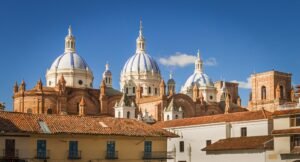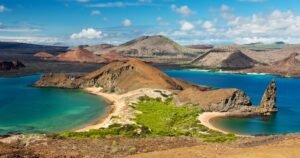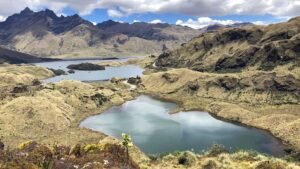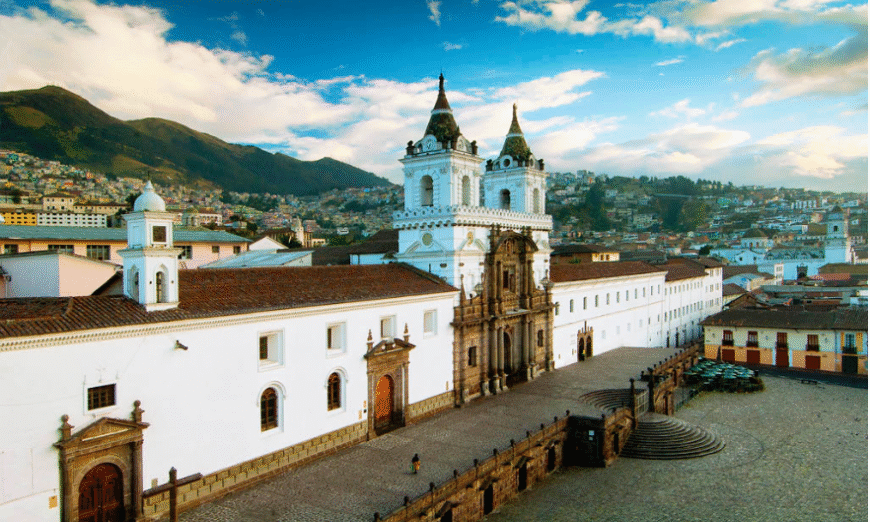 Ecuador, a South American nation spanning just 283,561 km², is widely celebrated for its immense natural and cultural wealth. The country boasts an extraordinary diversity of ecosystems, flora and fauna, and cultural expressions. Its strategic location on the equator gives rise to a wide variety of climates and habitats, making Ecuador one of the most biodiverse countries in the world.
Ecuador, a South American nation spanning just 283,561 km², is widely celebrated for its immense natural and cultural wealth. The country boasts an extraordinary diversity of ecosystems, flora and fauna, and cultural expressions. Its strategic location on the equator gives rise to a wide variety of climates and habitats, making Ecuador one of the most biodiverse countries in the world.
On September 8, 1978, Quito, the capital of Ecuador, was declared the first UNESCO World Cultural Heritage Site. This recognition was granted due to the city’s exceptional concentration of historical and cultural landmarks—one of the highest in Latin America. The Historic Center of Quito, covering 304 hectares, is home to 32 museums, 24 churches, 6 chapels, 7 convents, 6 monasteries, 13 plazas, and numerous other sites that preserve Ecuador’s rich history, traditions, and culture.
 On December 1, 1999, UNESCO also declared the city of Cuenca a World Cultural Heritage Site under the Convention Concerning the Protection of the World Cultural and Natural Heritage. This distinction was awarded to preserve Cuenca’s remarkable architectural and urban ensemble, which includes over 5,000 heritage properties. Cuenca is considered an exceptional example of a well-preserved fortified medieval city, showcasing outstanding civil and religious architecture from the 12th to the 18th centuries.
On December 1, 1999, UNESCO also declared the city of Cuenca a World Cultural Heritage Site under the Convention Concerning the Protection of the World Cultural and Natural Heritage. This distinction was awarded to preserve Cuenca’s remarkable architectural and urban ensemble, which includes over 5,000 heritage properties. Cuenca is considered an exceptional example of a well-preserved fortified medieval city, showcasing outstanding civil and religious architecture from the 12th to the 18th centuries.
 Another remarkable recognition came on June 21, 2014, when the Qhapaq Ñan – Andean Road System, was inscribed on the UNESCO World Heritage List as a Cultural Itinerary. For the first time in UNESCO’s history, a transnational cultural asset shared by six Latin American countries—Argentina, Bolivia, Chile, Colombia, Ecuador, and Peru—was collectively recognized. The Qhapaq Ñan was the backbone of the Inca Empire’s political and economic power. UNESCO recognized 693 km of roads, 308 archaeological sites, and 232 communities across these countries as part of the designation.
Another remarkable recognition came on June 21, 2014, when the Qhapaq Ñan – Andean Road System, was inscribed on the UNESCO World Heritage List as a Cultural Itinerary. For the first time in UNESCO’s history, a transnational cultural asset shared by six Latin American countries—Argentina, Bolivia, Chile, Colombia, Ecuador, and Peru—was collectively recognized. The Qhapaq Ñan was the backbone of the Inca Empire’s political and economic power. UNESCO recognized 693 km of roads, 308 archaeological sites, and 232 communities across these countries as part of the designation.
The Galápagos Islands, located about 1,000 km off the coast of mainland Ecuador in the Pacific Ocean, have been called a unique “living museum and showcase of evolution.” Situated at the confluence of three major ocean currents, the islands serve as a melting pot of marine biodiversity. Ongoing volcanic and seismic activity illustrates the forces that shaped the islands, whose isolation gave rise to extraordinary wildlife such as land iguanas, giant tortoises, and Darwin’s finches—species that famously influenced Charles Darwin’s theory of natural selection after his 1835 visit (UNESCO, 2025).
 In 1983, Sangay National Park was declared a UNESCO Natural World Heritage Site. Among its most striking features are the Altar, Tungurahua, and Sangay volcanoes, the latter two remaining highly active in recent decades. The park spans landscapes ranging from rugged snow-capped peaks to lush, biodiversity-rich Amazonian forests. It is home to 107 mammal species, 400 bird species, 90 amphibians, 26 reptiles, and 17 types of fish—many of them endemic, such as the wild guinea pig and the Azuay shrew. The park hosts more than 3,000 plant species, including 586 that are endemic, with over 250 species of orchids alone.
In 1983, Sangay National Park was declared a UNESCO Natural World Heritage Site. Among its most striking features are the Altar, Tungurahua, and Sangay volcanoes, the latter two remaining highly active in recent decades. The park spans landscapes ranging from rugged snow-capped peaks to lush, biodiversity-rich Amazonian forests. It is home to 107 mammal species, 400 bird species, 90 amphibians, 26 reptiles, and 17 types of fish—many of them endemic, such as the wild guinea pig and the Azuay shrew. The park hosts more than 3,000 plant species, including 586 that are endemic, with over 250 species of orchids alone.
 Beyond its cultural and natural heritage, Ecuador is also home to three UNESCO Global Geoparks: Tungurahua Volcano, Napo Sumaco, and Imbabura. The Imbabura Geopark encompasses the entire province of the same name, bordered by Carchi to the north, Pichincha to the south, Sucumbíos to the east, and Esmeraldas to the west. It features two major mountain ranges—the Eastern (Cordillera Real) and the Western Cordillera—separated by the Inter-Andean Valley. These formations reflect the geological forces that shaped the Andes. The region’s geological heritage is distributed across the mountains and valley, offering insight into the tectonic processes of the Andean orogeny.
Beyond its cultural and natural heritage, Ecuador is also home to three UNESCO Global Geoparks: Tungurahua Volcano, Napo Sumaco, and Imbabura. The Imbabura Geopark encompasses the entire province of the same name, bordered by Carchi to the north, Pichincha to the south, Sucumbíos to the east, and Esmeraldas to the west. It features two major mountain ranges—the Eastern (Cordillera Real) and the Western Cordillera—separated by the Inter-Andean Valley. These formations reflect the geological forces that shaped the Andes. The region’s geological heritage is distributed across the mountains and valley, offering insight into the tectonic processes of the Andean orogeny.
In addition to UNESCO recognitions for its cultural, architectural, and ecological significance, Ecuador has also earned accolades on the global tourism stage. In 2025 alone, Ecuador was honored at the World Tourism Fair in Madrid, Spain, and named Wanderlust Destination of the Year 2025. This prestigious international award was presented by Wanderlust, a renowned British travel magazine specializing in high-end tourism and travel experiences.
………………………………………………………………………………………………………………………………….
By: Jorge Vincio Anrango, Consul del Ecuador en India
Photo Credit: https://www.bing.com/images

